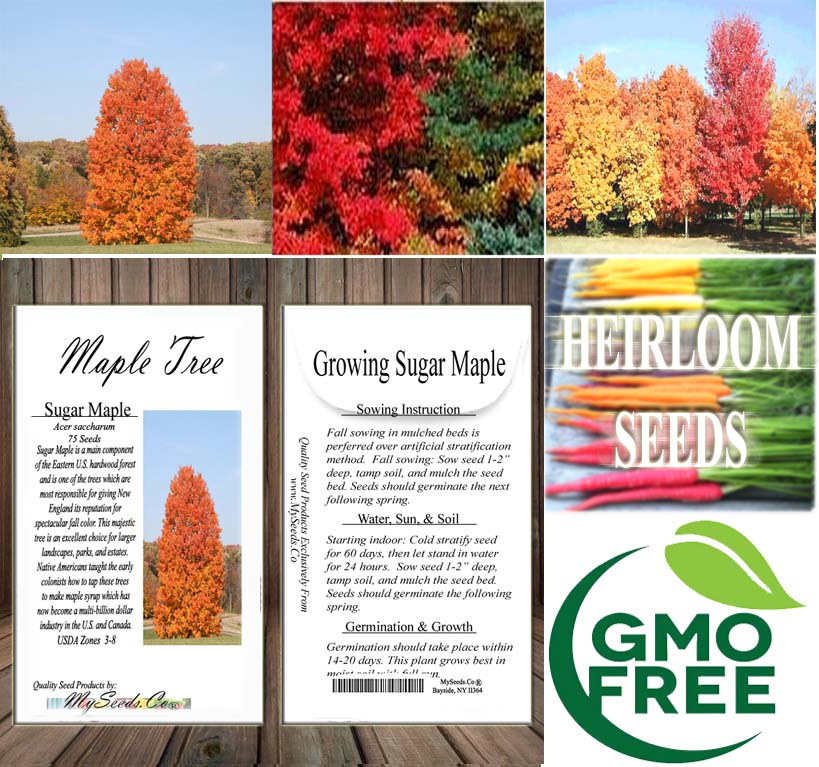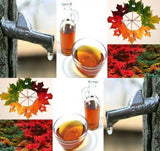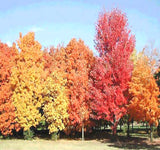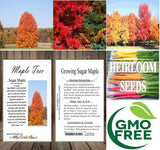Acer saccharum (Sugar Maple) Seedlings & Transplants Available for Spring Shipping
Seedlings & Transplants are shipped each Spring starting in Late March to Early April.
Spring Shipment Stops towards end of Spring. First come first Served. Any Orders placed after this Time frame will be shipped out the following Spring season.
NO shipping to AK, AZ, CA or HI
Bare-Root Size available:
12-18" Seedlings
2-3 ft Seedlings
Successful Planting Steps:
(1) Dig planting hole approximately 10% wider and deeper than seedling size.
(2) Plant Plug(s) and ensure top of plug is level with soil, back fill hole, and top with mulch. Keep mulch at least 1" away from plant stem.
(3) Water thoroughly at time of planting
(4) Use cage (or fence) as needed to prevent animal damage.
(5) Weekly watering is required until new growth is observed. Best practice is to deep soak the seeding once a week, on top of the every other day light watering. During hot/dry days, additional watering may be needed.
****************************************************************************************
Acer saccharum (Sugar Maple) is a stately and iconic deciduous tree native to North America.
Appearance:
Leaves: The Sugar Maple's leaves are well-known for their distinctive shape. They are palmately lobed with five distinct, deep, and sharply pointed lobes. The leaves are medium to dark green during the growing season and transform into brilliant shades of orange, red, or yellow in the fall.
Bark: The bark of mature Sugar Maples is gray and tends to develop furrowed or scaly patterns as the tree ages.
Size: Sugar Maples are known for their impressive size. They can reach heights of 80 to 100 feet (24 to 30 meters) or even more, with a broad, rounded crown.
Sap Production:
Sugar Maples are renowned for their sap, which is used to produce maple syrup. These trees are tapped in the late winter and early spring to collect sap, which is then processed into maple syrup.
Habitat:
Sugar Maples are primarily found in the eastern part of North America, including regions of the United States and Canada. They thrive in mixed hardwood forests.
Fall Foliage:
The Sugar Maple is celebrated for its stunning fall foliage. During autumn, the leaves undergo a breathtaking transformation, turning vibrant shades of red, orange, or yellow. This makes it a highly sought-after tree for landscaping and as a focal point in parks and urban areas.
Wood:
Sugar Maple wood is prized for its hardness and is used in various applications, including flooring, cabinetry, furniture, and musical instruments.
Wildlife Habitat:
Sugar Maples provide essential habitat and food for a variety of wildlife. Birds, squirrels, and other animals feed on the seeds (samaras), and the tree's dense foliage offers shelter.
Sugar Maple Varieties:
Several cultivated varieties of Sugar Maples exist, each with unique leaf characteristics or growth habits. These varieties are often chosen for landscaping purposes.
Soil and Climate:
Sugar Maples prefer well-drained soil and thrive in areas with a temperate climate. They are adaptable but thrive in regions with cold winters and warm summers.
Landscape Use:
Sugar Maples are a popular choice for landscaping due to their shade, fall color, and iconic appearance. They are often planted as shade trees in residential yards, parks, and along streets.
The Sugar Maple, with its majestic appearance and valuable resources like sap and timber, holds a special place in North American culture and ecosystems. Its stunning fall colors make it a symbol of autumn in many parts of the continent.
Botanical Name : Acer saccharum
Common Name : Sugar Maple
Height : 80-100 ft
Spread : 15-30 ft
Germination Info : Seed requires up to 30 days cold moist stratification
Hardiness zone : 3-8
Average seed per ounce : Approx. 1,750






